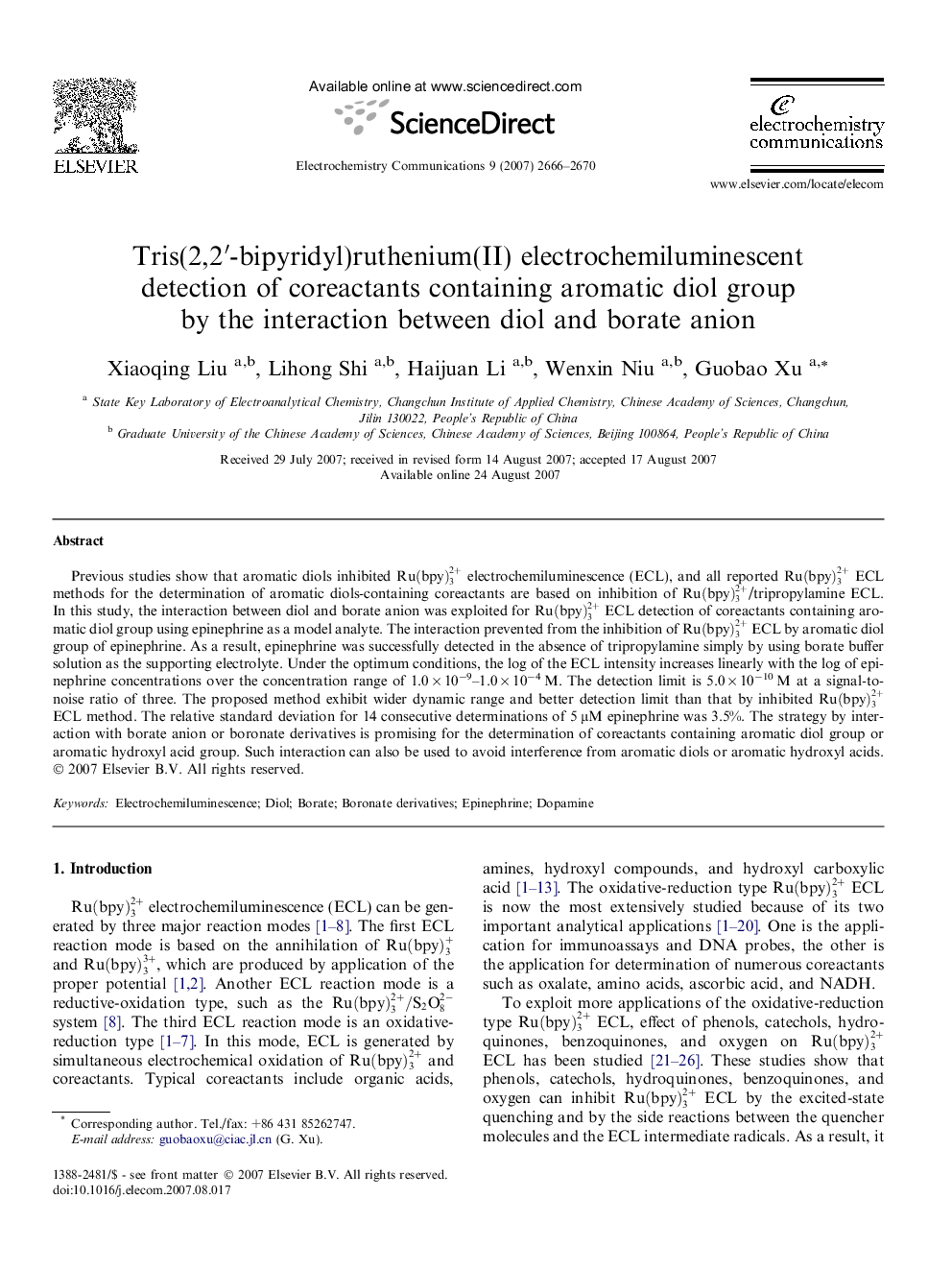| Article ID | Journal | Published Year | Pages | File Type |
|---|---|---|---|---|
| 182133 | Electrochemistry Communications | 2007 | 5 Pages |
Previous studies show that aromatic diols inhibited Ru(bpy)32+ electrochemiluminescence (ECL), and all reported Ru(bpy)32+ ECL methods for the determination of aromatic diols-containing coreactants are based on inhibition of Ru(bpy)32+/tripropylamine ECL. In this study, the interaction between diol and borate anion was exploited for Ru(bpy)32+ ECL detection of coreactants containing aromatic diol group using epinephrine as a model analyte. The interaction prevented from the inhibition of Ru(bpy)32+ ECL by aromatic diol group of epinephrine. As a result, epinephrine was successfully detected in the absence of tripropylamine simply by using borate buffer solution as the supporting electrolyte. Under the optimum conditions, the log of the ECL intensity increases linearly with the log of epinephrine concentrations over the concentration range of 1.0 × 10−9–1.0 × 10−4 M. The detection limit is 5.0 × 10−10 M at a signal-to-noise ratio of three. The proposed method exhibit wider dynamic range and better detection limit than that by inhibited Ru(bpy)32+ ECL method. The relative standard deviation for 14 consecutive determinations of 5 μM epinephrine was 3.5%. The strategy by interaction with borate anion or boronate derivatives is promising for the determination of coreactants containing aromatic diol group or aromatic hydroxyl acid group. Such interaction can also be used to avoid interference from aromatic diols or aromatic hydroxyl acids.
